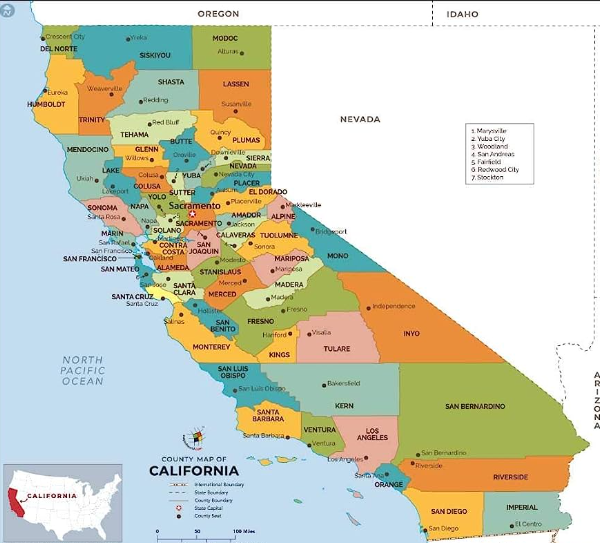California DSCR Loans
How do you get a DSCR Loan in California?
Research Lenders: Look for lenders who offer DSCR loans in California. These could include traditional banks, credit unions, private lenders, or specialized commercial real estate lenders.
Evaluate Your Property: DSCR loans are often used for commercial real estate properties. Assess your property’s income potential, expenses, and overall financial health. Lenders typically prefer properties with strong cash flow and a healthy DSCR.
Gather Financial Documentation: Prepare your financial documents, including tax returns, financial statements, rent rolls (if applicable), and any other documents that demonstrate the property’s income and expenses.
Calculate DSCR: Calculate the property’s Debt Service Coverage Ratio. This is usually calculated by dividing the property’s net operating income (NOI) by its annual debt service (loan payments).
Loan Application: Complete the lender’s loan application process. This may involve providing personal and property information, financial documentation, and a business plan if applicable.
Underwriting Process: The lender will review your application and financials. They will assess the property’s cash flow, market value, and your ability to service the debt. This process may involve site visits, property appraisals, and credit checks.
Negotiate Terms: If your application is approved, you’ll receive a term sheet outlining the loan terms, including interest rate, loan amount, repayment period, and any other conditions. Negotiate these terms if needed.
Due Diligence: Conduct due diligence on the property, which might involve property inspections, environmental assessments, and title searches.
Final Approval: Once due diligence is complete and all conditions are satisfied, the lender will provide final approval for the loan.
Closing: Prepare for the loan closing, where you’ll sign the necessary legal documents, pay any closing costs or fees, and the loan funds will be disbursed.
Alabama
Alaska
Arizona
Arkansas
California
Colorado
Connecticut
Delaware
Florida
Georgia
Hawaii
Idaho
Illinois
Indiana
Iowa
Kansas
Kentucky
Louisiana
Maine
Maryland
Massachusetts
Michigan
Minnesota
Mississippi
Missouri
Montana
Nebraska
Nevada
New Hampshire
New Jersey
New Mexico
New York
North Carolina
North Dakota
Ohio
Oklahoma
Oregon
Pennsylvania
Rhode Island
South Carolina
South Dakota
Tennessee
Texas
Utah
Vermont
Virginia
Washington
West Virginia
Wisconsin
Wyoming
How are Non-QM loans in California calculated?
The Debt Service Coverage Ratio (DSCR) is a critical financial metric used by lenders to assess the ability of a property to generate sufficient income to cover its debt obligations, particularly in the context of commercial real estate financing. The DSCR is calculated by dividing the property’s Net Operating Income (NOI) by its total Debt Service.
The formula to calculate DSCR is as follows:
DSCR = Net Operating Income (NOI) / Total Debt Service
Here’s how you can calculate each component:
Net Operating Income (NOI): NOI is the income generated by a property after deducting all operating expenses, excluding debt service (loan payments) and income taxes. The formula for NOI is:
NOI = Total Revenue – Total Operating Expenses
Total Revenue includes rental income, any other income generated by the property (such as parking fees or vending machines), and other sources of income.
Total Operating Expenses include property management fees, property taxes, insurance, utilities, maintenance and repairs, and other operational costs.
Total Debt Service: Total Debt Service is the sum of all debt-related payments associated with the property, including principal and interest payments on the loan. It may also include any other debt-related obligations, such as property taxes and insurance payments.
Once you have calculated both NOI and Total Debt Service, you can plug these values into the DSCR formula to obtain the ratio. The resulting DSCR value provides a measure of the property’s ability to cover its debt payments:
A DSCR greater than 1 indicates that the property’s income is sufficient to cover its debt obligations. The higher the DSCR, the more comfortable lenders usually are, as it suggests a greater margin of safety.
A DSCR of exactly 1 means that the property’s income is just enough to cover its debt payments. This is often considered the minimum acceptable DSCR by lenders.
A DSCR less than 1 indicates that the property’s income is not enough to cover its debt payments, which may raise concerns for lenders about the property’s ability to service its debt.
Different lenders may have varying requirements for the minimum DSCR they consider acceptable, but generally, a DSCR of 1.2 or higher is often preferred for commercial real estate financing.
It’s important to ensure that you’re using accurate and comprehensive financial data when calculating DSCR, as the accuracy of the ratio directly impacts the lender’s assessment of the property’s financial viability.
